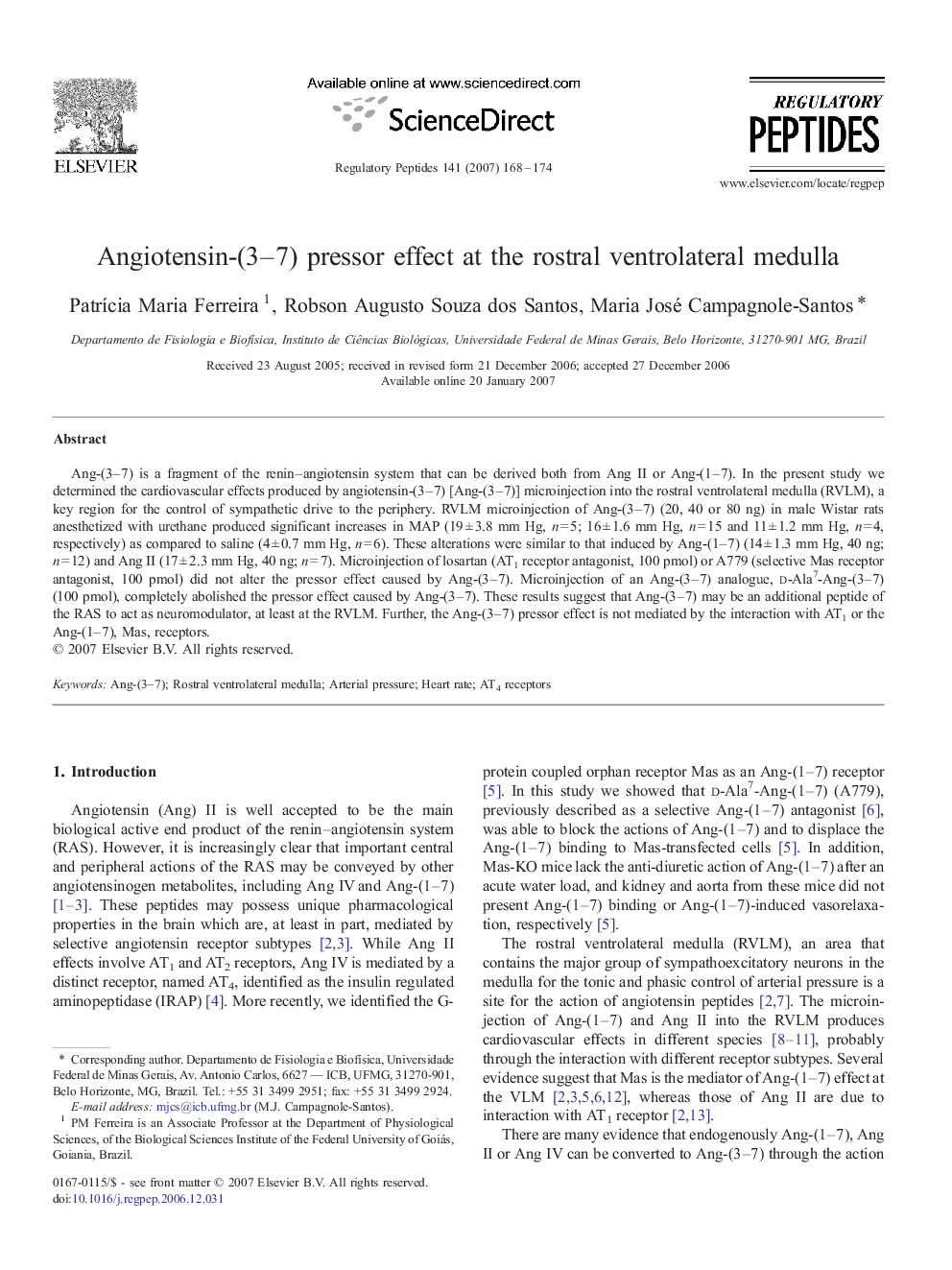| Article ID | Journal | Published Year | Pages | File Type |
|---|---|---|---|---|
| 2023307 | Regulatory Peptides | 2007 | 7 Pages |
Abstract
Ang-(3-7) is a fragment of the renin-angiotensin system that can be derived both from Ang II or Ang-(1-7). In the present study we determined the cardiovascular effects produced by angiotensin-(3-7) [Ang-(3-7)] microinjection into the rostral ventrolateral medulla (RVLM), a key region for the control of sympathetic drive to the periphery. RVLM microinjection of Ang-(3-7) (20, 40 or 80 ng) in male Wistar rats anesthetized with urethane produced significant increases in MAP (19 ± 3.8 mm Hg, n = 5; 16 ± 1.6 mm Hg, n = 15 and 11 ± 1.2 mm Hg, n = 4, respectively) as compared to saline (4 ± 0.7 mm Hg, n = 6). These alterations were similar to that induced by Ang-(1-7) (14 ± 1.3 mm Hg, 40 ng; n = 12) and Ang II (17 ± 2.3 mm Hg, 40 ng; n = 7). Microinjection of losartan (AT1 receptor antagonist, 100 pmol) or A779 (selective Mas receptor antagonist, 100 pmol) did not alter the pressor effect caused by Ang-(3-7). Microinjection of an Ang-(3-7) analogue, d-Ala7-Ang-(3-7) (100 pmol), completely abolished the pressor effect caused by Ang-(3-7). These results suggest that Ang-(3-7) may be an additional peptide of the RAS to act as neuromodulator, at least at the RVLM. Further, the Ang-(3-7) pressor effect is not mediated by the interaction with AT1 or the Ang-(1-7), Mas, receptors.
Related Topics
Life Sciences
Biochemistry, Genetics and Molecular Biology
Biochemistry
Authors
PatrÃcia Maria Ferreira, Robson Augusto Souza dos Santos, Maria José Campagnole-Santos,
